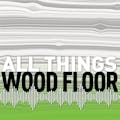Catching up where we left off with the job where I had decided to subcontract a job to a guy I know that we’re calling Pauley, who doesn’t necessarily deal with change orders very well…
So the old floor is removed, the “problem” tile that upset Pauley so much is gone, and now there is just a grey surface to deal with.
Now, I don’t have an agreement for providing slab preparation included in the installation. In my proposals, these are always hidden conditions to be evaluated with the owner/GC.
When I ask Pauley what prep is needed, Pauley shuffles his feet over the floor and finds two areas that “need work.”
When I ask Pauley what prep is needed, Pauley shuffles his feet over the floor and finds two areas that “need work.” I suggested we do a laser survey and really see what’s going on. As the old game show would shout: “The survey says…!”
The slab had many more issues than just the two spots. With a grid of numbers marked on the floor in a 3’ x 3’ grid, it is easy to stand back and now “see” the undulating slab. The GC knew I was going to review the slab with him, so when he arrived, we were nearly done (taking about 75 minutes to survey 1,400 square feet of floor).
It was obvious that making the slab truly level was not possible due to the existing kitchen cabinets, clearances to appliances and the rear powder room. The slab varied at 1 5/8” from the highest mark to the lowest on a wobbly progression through the house.
We were able to agree at what elevations we could fix the floor in each area and how the new floor was going to gently flow from area to area.
The GC now knew to tell his carpenters to scribe the base as needed, which lets another trade prepare rather than being either surprised to do the extra work or just slap the base on with gaps to the floor (and you know that usually ends up with a callback for the floor company!). We agreed on a change order and proceeded with the planned floor prep.
Pauley admitted he would never have taken the time to do a survey. Hopefully he sees the benefit to adding that process and not guessing on the floor prep. After all, once the floor is in, it’s a real costly endeavor to correct a low spot, squeak or other common floor problems originating from installing over a poor slab condition.
The installation was straightforward, with each day’s progress reported to the GC. And it was rather easy not having to fight a crooked slab or using excessive glue to “fix” hollow spots. The sanders also were able to benefit from a flatter surface with the machines not digging into hillsides or sliding sideways over crests. The coats went on without any “holidays” or runs because the T-bar was not floating over high ridges.
All in all, the project finished six days later than originally planned, but no one was upset on the delays due to the constant communication and updating on the job’s conditions and progress. We all did well and it was a WIN-WIN-WIN for everyone.




























